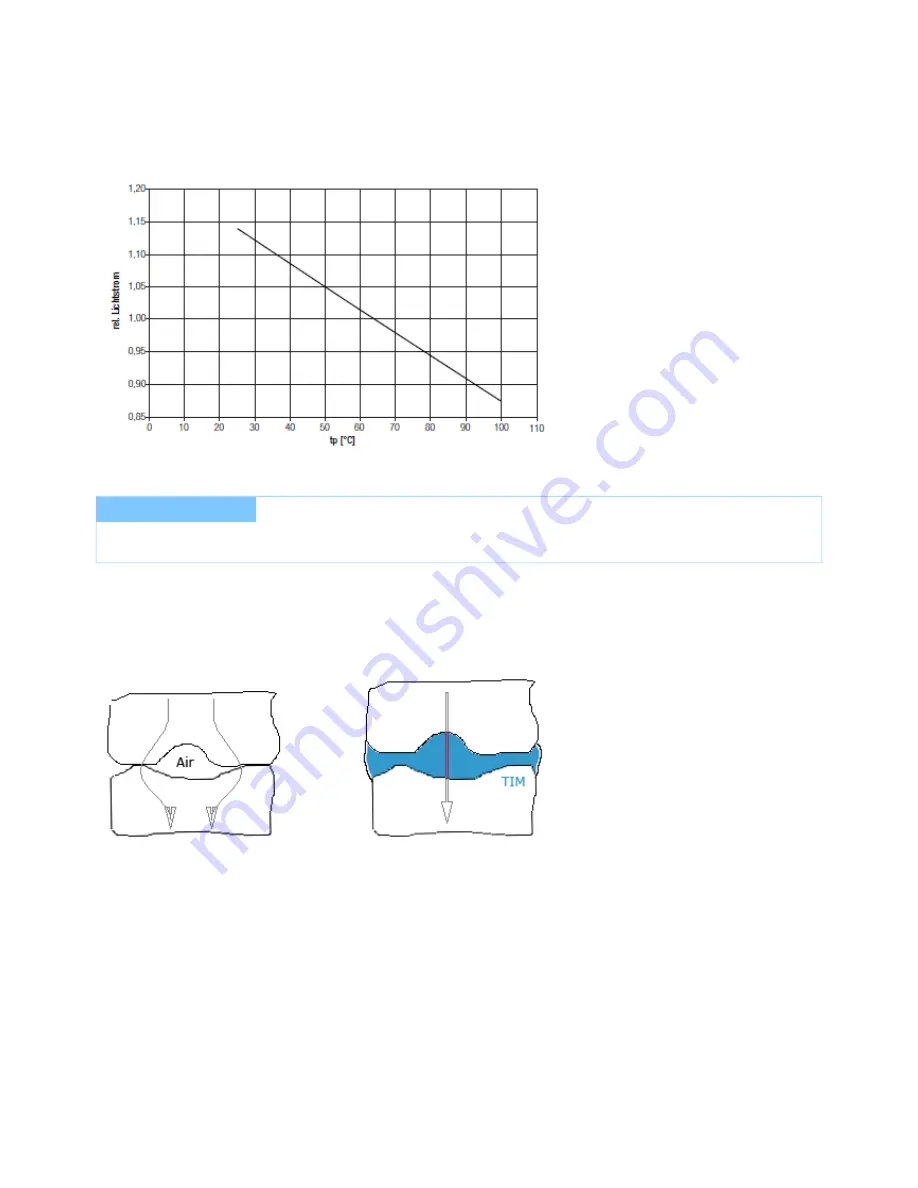
Technical Design-in Guide SLE G6 | 12-2018 | 2.1 | en
Thermal Aspects
c
40 / 59
Figure: Lifetime characteristic
6.1.3. Thermal Interface Material
with
Figure: Heat transfer without TIM (left) and
TIM (right)
(magnified illustration)
to reduce t
Thermal Interface Material (TIM) helps
he thermal impedance between LED module and heat sink and thus improves the
heat transfer between the two components.
uneven surfaces can be the cause for trapped air.
When LED module and heat sink are joined together,
Since air is a thermal insulator
trapped air obstructs the heat transfer. TIM replaces the trapped air and improves the heat transfer.
In general:
I
NOTICE
Please check the information on the operating temperature and the requirements for cooling in the module data sheets.
The lower the thermal impedance, the better the heat transfer and thus the cooling of the modules
_
The thickness of the TIM relates to the unevenness of the surfaces: the more uneven the surface is, the thicker the TIM must
be
_
















































